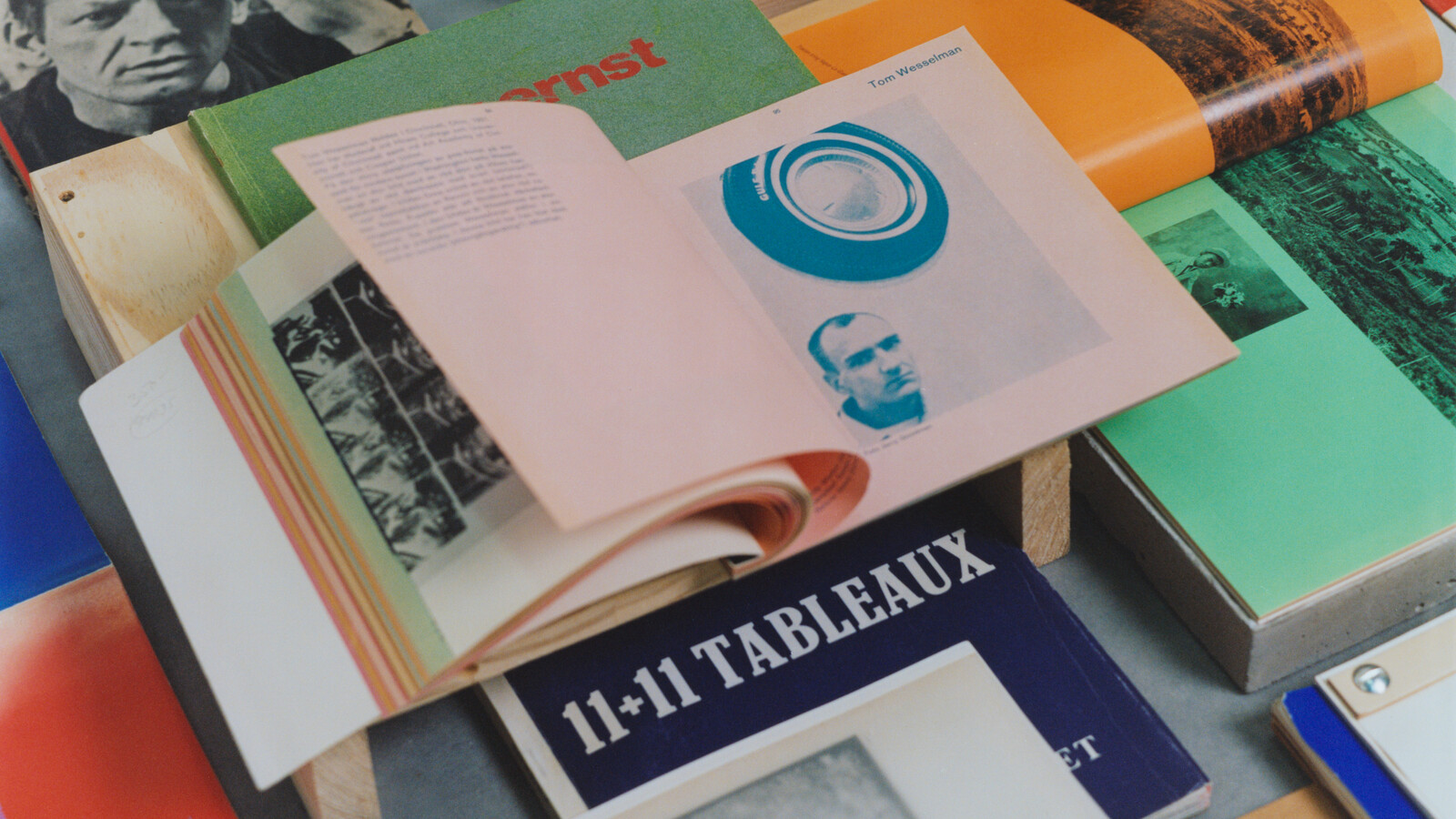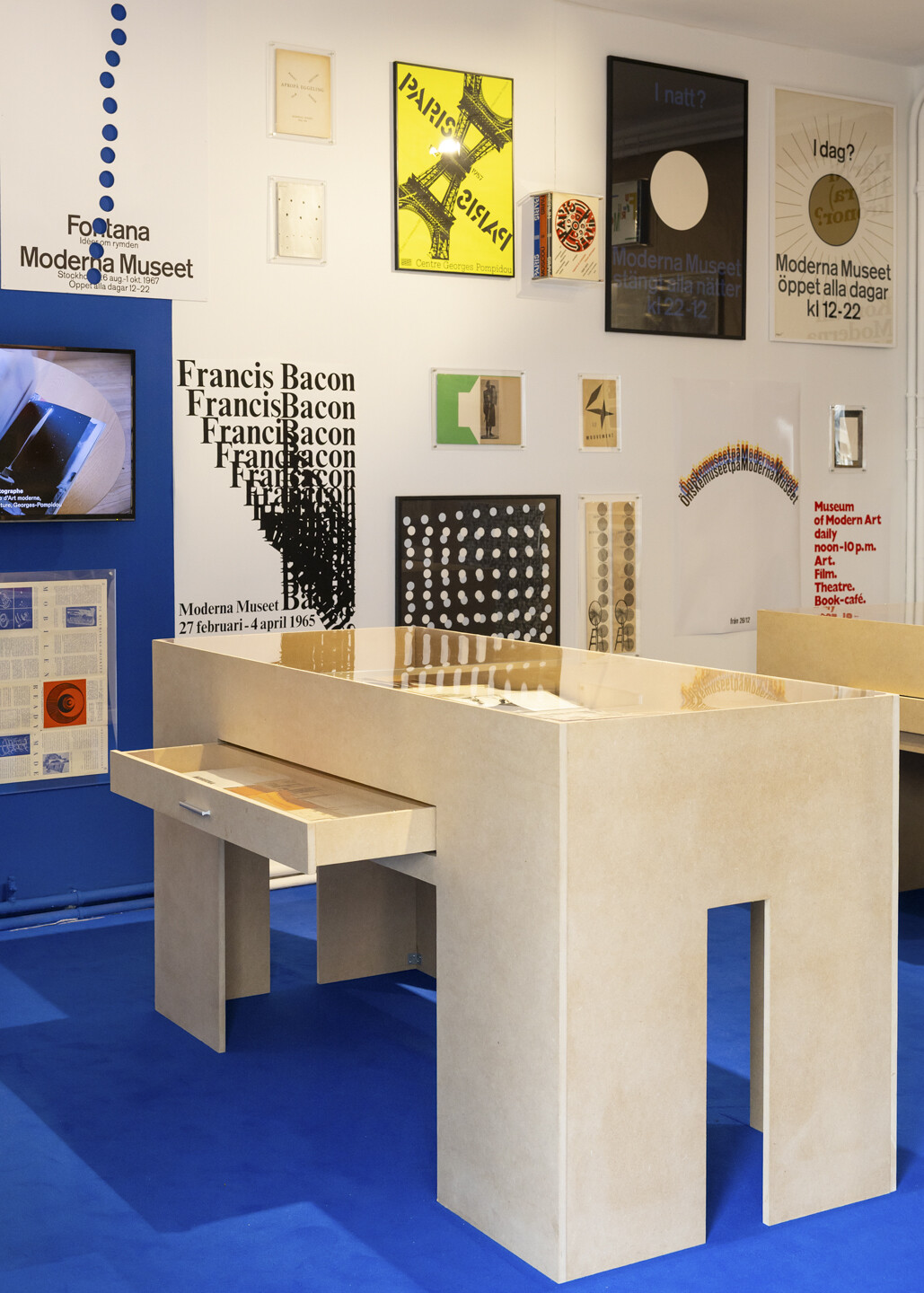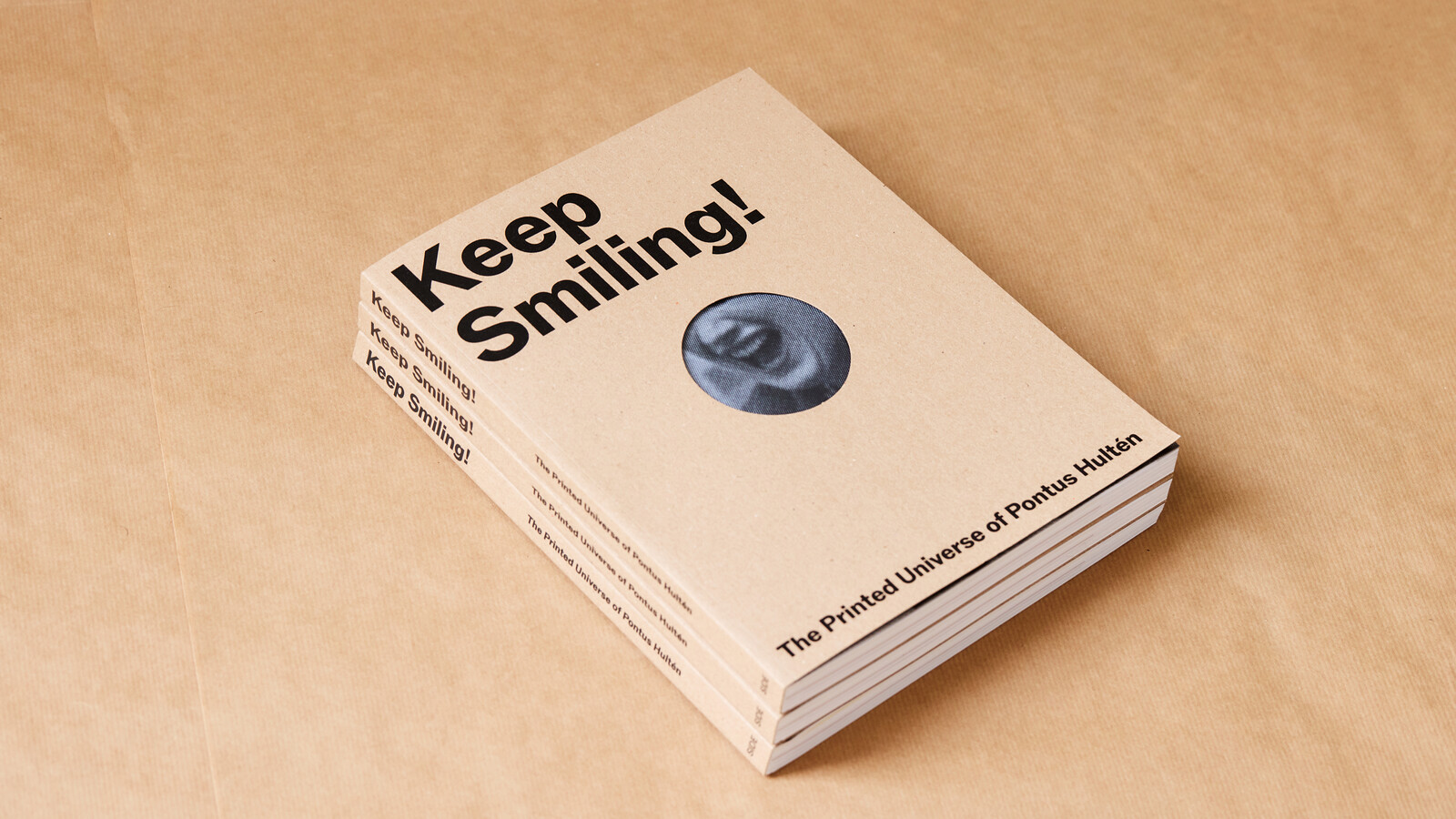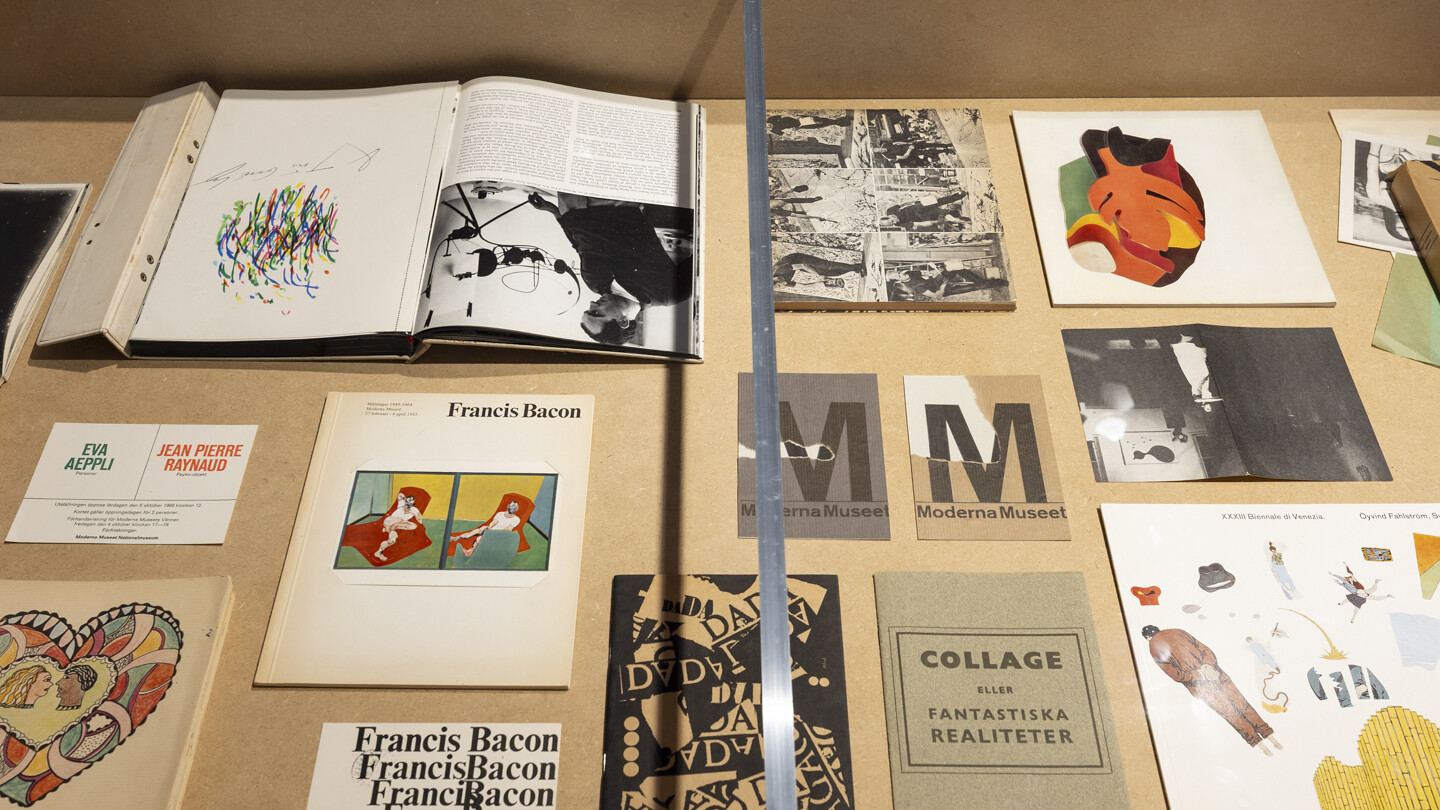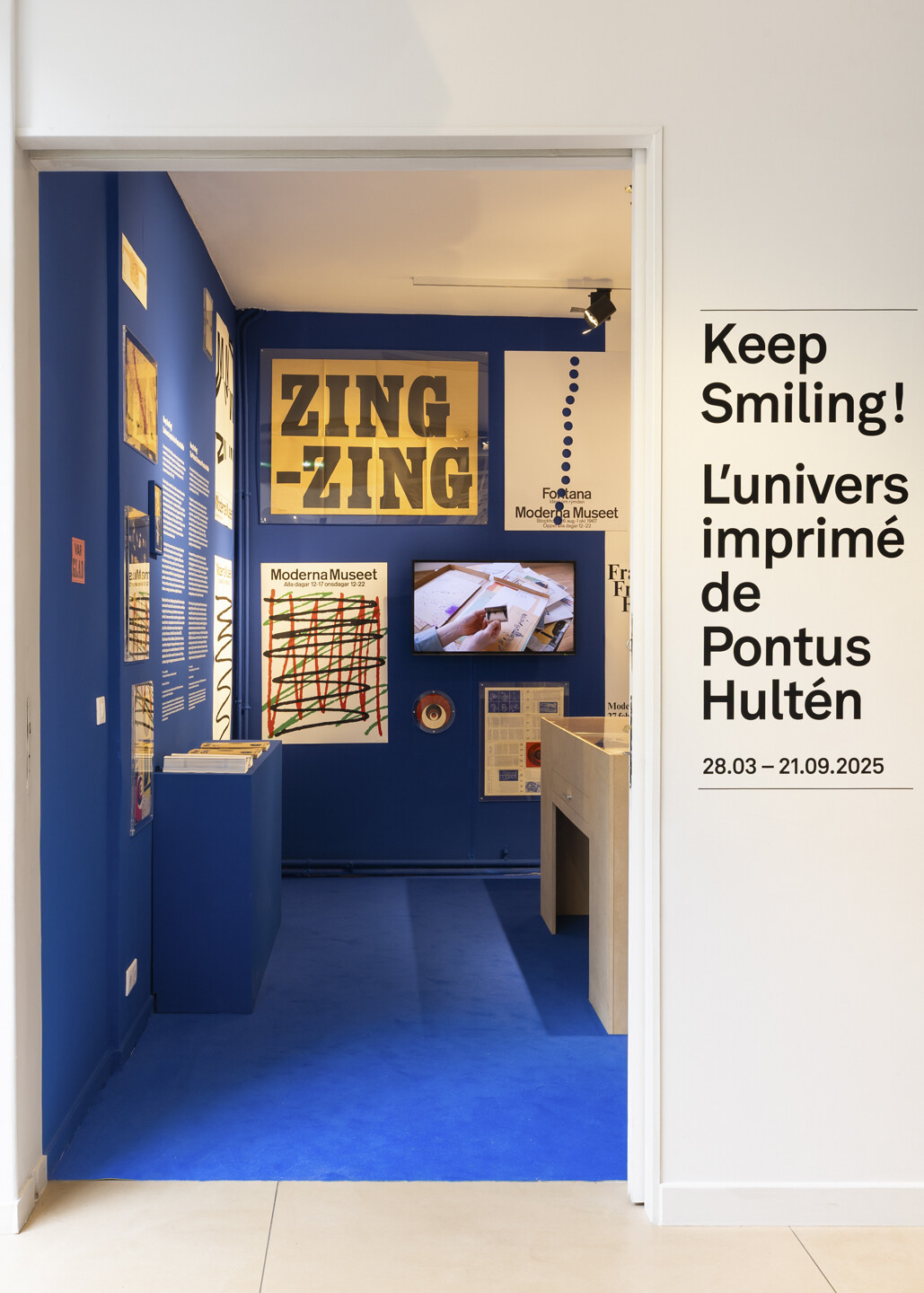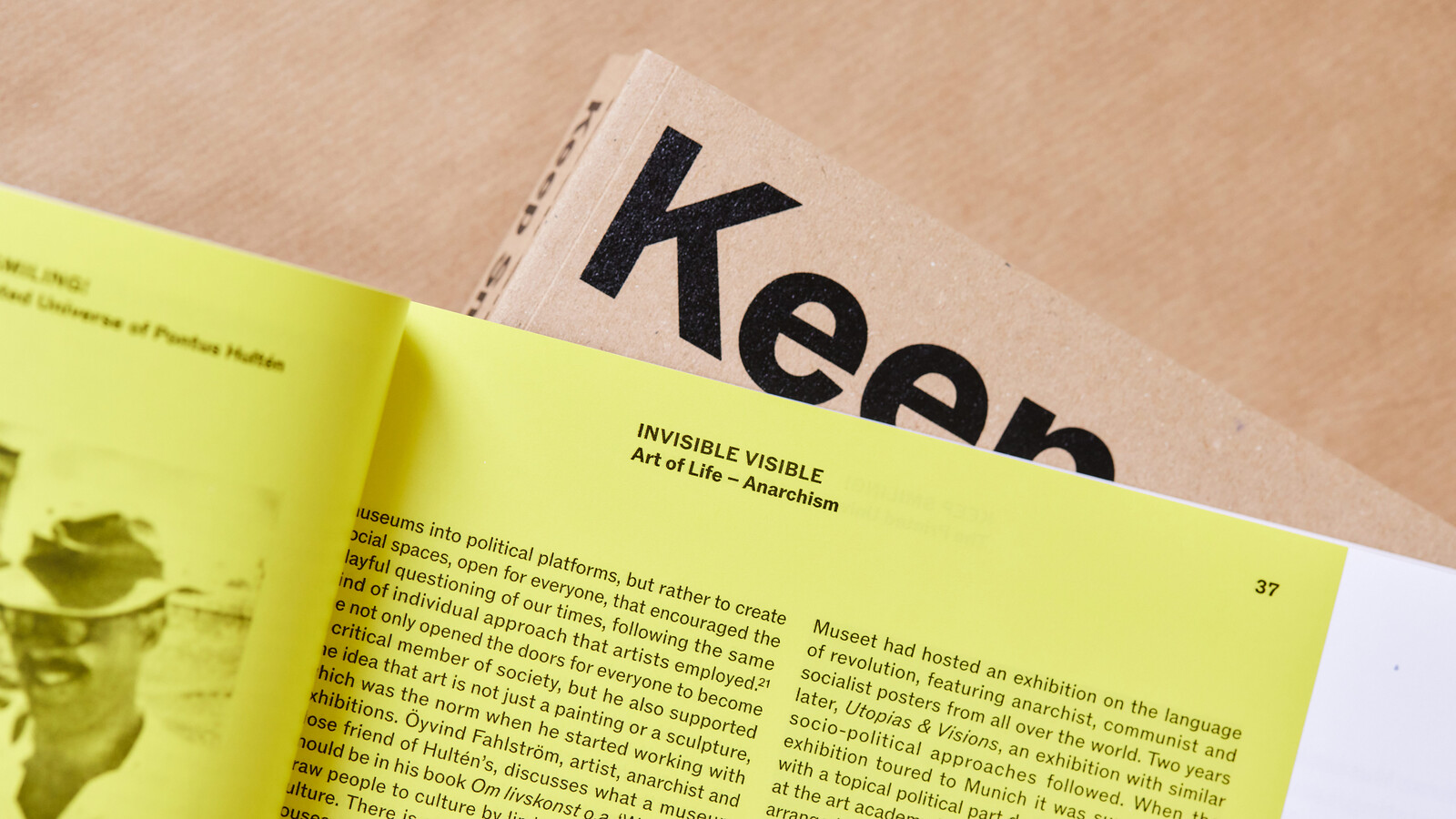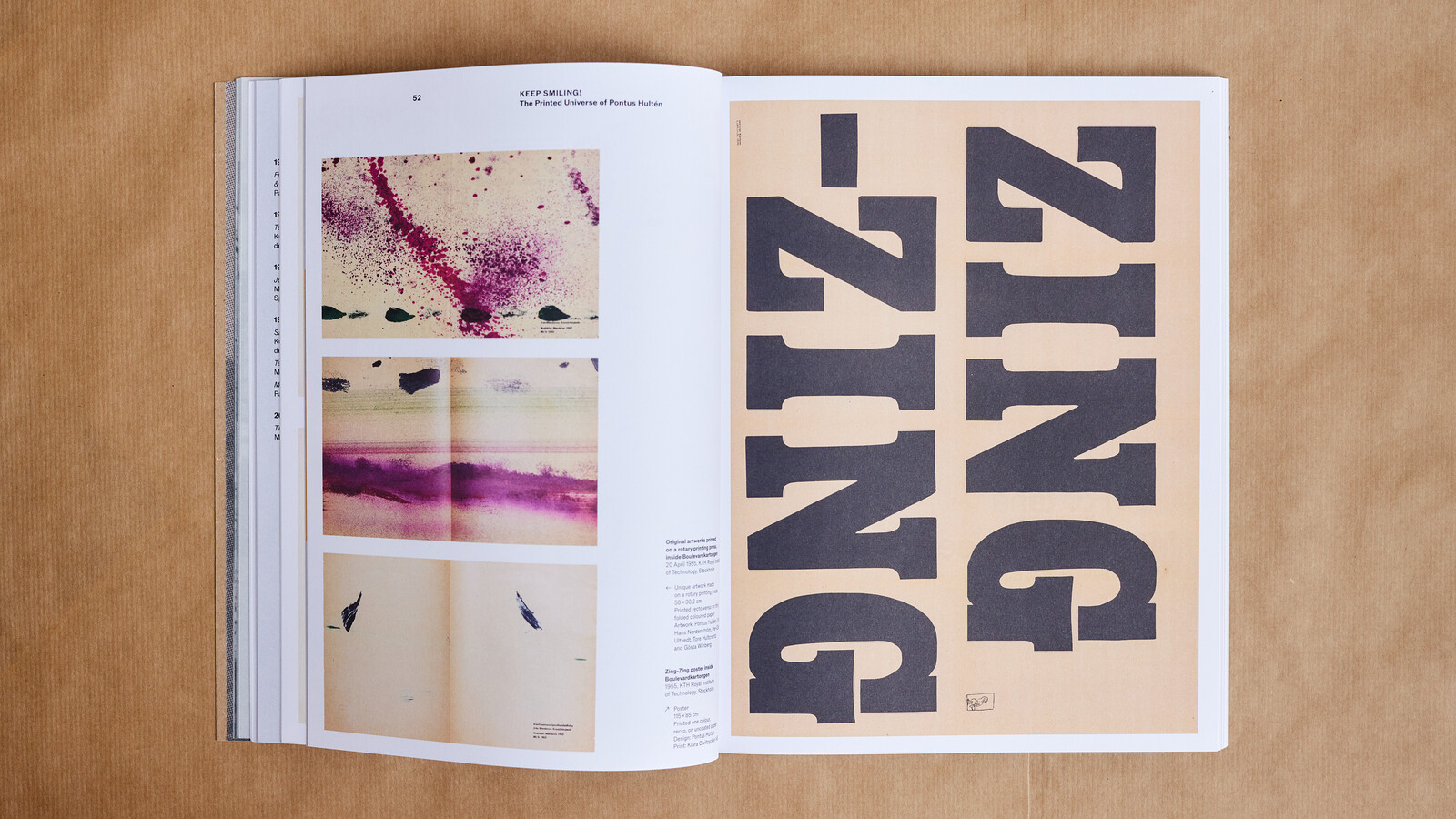Keep Smiling!
The Printed Universe of Pontus Hultén
March 28–September 21, 2025
11 rue Payenne
75003 Paris
France
Hours: Tuesday–Sunday 12–7pm,
Thursday 12–9pm
T +33 1 44 78 80 20
institutsuedois@si.se
As head of several major artistic institutions across the world, Pontus Hultén (1924–2006) revolutionised the art world and its place in society. This exhibition presents around a hundred printed documents produced under his artistic leadership, testifying to his playful sense of free-spirited and profoundly inventive anarchy.
An art historian and exhibition curator, Pontus Hultén helped to establish several major museums including the Moderna Museet in Stockholm, which he headed from 1958 to 1973, and the Musée National d’Art Moderne at the Pompidou Centre, whose first director he was between 1973 and 1981. He left his mark on the history of these museums and consolidated their global renown with exhibitions designed both as critiques of society and as all-embracing experiences blurring the frontiers between art and life. Some exhibitions presented at the Moderna Museet in the 1960s were groundbreaking, for example the iconic monumental sculpture titled Hon* by Niki de Saint Phalle, Jean Tinguely and Per Olof Ultvedt, whose giant vagina visitors thronged to enter. The exhibition Modellen – för ett bättre samhälle** invited children to explore and reshape the museum space as a metaphor of social change. Similarly, visitors could take part in the creation of part of the exhibition Poesin måste göras av alla. Förändra världen!*** and call a number to express their opinions about the programme. To make art accessible to all and allow it to integrate with daily life, Pontus Hultén was among the first to extend museum opening hours. His pricing policy also formed part of a desire for openness and democratisation: the catalogue for the exhibition Andy Warhol (1968, Moderna Museet) was, for instance, on sale for a dollar.
Hultén shaped the visual worlds of the museums he headed by bringing together artists, curators, graphic designers, publishers, authors and printers and setting them to work on bold projects that ran counter to established conventions. These collaborations exploded traditional hierarchies: different roles intermingled, were reinvented, or simply disappeared. Although he rarely designed or printed material himself, Hultén’s influence could be felt at each stage of the creative process. Among the people he regularly worked with were the Swedish graphic designers Hubert Johansson, John Melin & Anders Österlin (M&Ö) and Gösta Svensson, and, later on, international figures such as Jean Widmer and Roman Cieślewicz.
According to Hultén, each piece of printed material was entitled to its own individual character. Form must reflect not only content but also the personality of its designer, and it must make the invisible, visible. The “aura” of each document arose from a close relationship between content and form, where the format was adapted to the subject, the materials used were carefully chosen to convey a message, and printing used the most advanced techniques of the time. The idea was to constantly push back the boundaries of what was possible.
The common thread that runs through Hultén’s legacy is a joyful, ironic, free-spirited anarchism that is profoundly inventive and utopian. Drawing inspiration from Dadaism, he saw art as a critique of reality. His productions wove a subtle network of signs and created a constellation of questions that defied conventions.
*She
**The Model—For a Better Society
***Poetry should be for everyone. Change the world!
Curated by Stina Gromark, Paris-based Swedish graphic designer, researcher, teacher, publisher and curator. Her book Keep Smiling! The Printed Universe of Pontus Hultén (232 pages, 215 x 280 mm, English and French), was released by OUT SIDE IN in March 2025 to coincide with the exhibition.
Institut suédois
Housed in a 16th-century mansion in central Paris, the Institut suédois provides a unique link for cultural and artistic exchange between France and Sweden. Contemporary art is the driving force of its multidisciplinary programme, fostering vibrant dialogue between artists and the public. Since it was established in 1971, the institute has curated exhibitions, performances, concerts, and discussions that facilitate public engagement and professional collaboration across diverse cultural sectors.
The Institut suédois also hosts artists and researchers in residence, further strengthening its position as an international hub of creative research and production. Educational initiatives, such as mediation, seminars, and language courses, complement its cultural programming and knowledge exchange.
In addition to its contemporary focus, the permanent collection, exhibited in the mansion and garden, highlights the depth of Franco-Swedish cultural relations. Featuring paintings, engravings and sculptures from the 18th to the 20th centuries, the collection offers historical context to the institute’s commitment to cultural dialogue.

